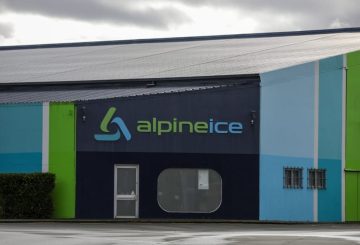Ang Medsafe, ang awtoridad sa kaligtasan ng mga gamot at medikal na aparato sa New Zealand, ay nagbigay ng berdeng ilaw sa 11 mga gamot sa sipon at trangkaso na naglalaman ng pseudoephedrine. Sinabi ng mga tagapagtustos ng parmasyutiko na maaari nilang magsimulang magbigay ng mga produktong ito noong Hunyo. Mas maaga ito kaysa sa unang inaasahang petsa ng 2025, ayon sa Associate Health Minister na si David Seymour.
Ipinaliwanag ni Seymour na tumugon ang gobyerno sa hinihiling ng publiko para sa mga gamot na ito sa oras para sa taglamig sa pamamagitan ng mabilis na pagbabago ng batas at pagpapabilis ng proseso ng pag-apruba ng Medsafe. Ang susunod na hakbang ay para sa mga kumpanya ng parmasyutiko na maihatid ang mga gamot na ito sa New Zealand, na ipinahiwatig nila na maaaring gawin sa taglamig.
Naniniwala ang ministro na magdudulot ito ng makabuluhang kaluwagan sa mga New Zealand na nagdurusa sa sipon at trangkaso ngayong taglamig. Binanggit din niya na ang mga tao ay magkakaroon na ngayon ng access sa parehong epektibong gamot sa sipon at trangkaso na magagamit sa Australia, Canada, UK, at US.
Ang Abuse Abuse of Drug (Pseudoephedrine) Amendment Bill, na muling inailuri ang pseudoephedrine mula sa isang Class B patungo sa isang gamot na kinokontrol ng Class C, ay naipasa nang magkakaisa sa Kapulungan ngayong linggo. Ang pagbabagong ito, kasama ang mga pagbabago sa Mga Regulasyon ng Gamot 1984, ay nangangahulugan na ang mga New Zealanders ay maaari na ngayong bumili ng mga gamot sa sipon at trangkaso na naglalaman ng pseudoephedrine mula sa isang parmasya nang walang reseta.
Pinuna ni Seymour ang nakaraang pagbabawal sa mga gamot na ito, na batay sa mga alalahanin na gagamitin ang pseudoephedrine upang makagawa ng methamphetamine. Nagtalo siya na ang mga kriminal na gang ay may mas epektibong paraan ng pagkuha ng pseudoephedrine para sa produksyon ng meth at na ang mga pamamaraang ito ay dapat maging focus ng mga pagsisikap sa pagpapatupad ng batas.
Sa kabila ng mga pagbabago, mananatili ang mga proteksyon upang maiwasan ang maling paggamit ng mga gamot na ito. Ang pseudoephedrine ay patuloy na magiging isang kontroladong gamot at isang sangkap na precursor, na may mga paghihigpit sa pag-import at pag-export na nasa lugar pa rin. Ang Pulisya at Customs ng New Zealand ay magkakaroon din ng awtoridad na sakupin ang anumang mga ilegal na produkto.
Natupad ng gobyerno, ayon kay Seymour, ang pangako nito na gumawa ng mga prinsipyong desisyon sa pamamagitan ng pag-aalis ng hindi kinakailangang red tape at pagbibigay ng mas maraming kalayaan at pagpipilian ang mga may sakit na New Zealand sa pagbili ng epektibong gamot sa sipon at trangkaso. Para sa karagdagang impormasyon, bisitahin ang website ng Ministry of Health.






























































